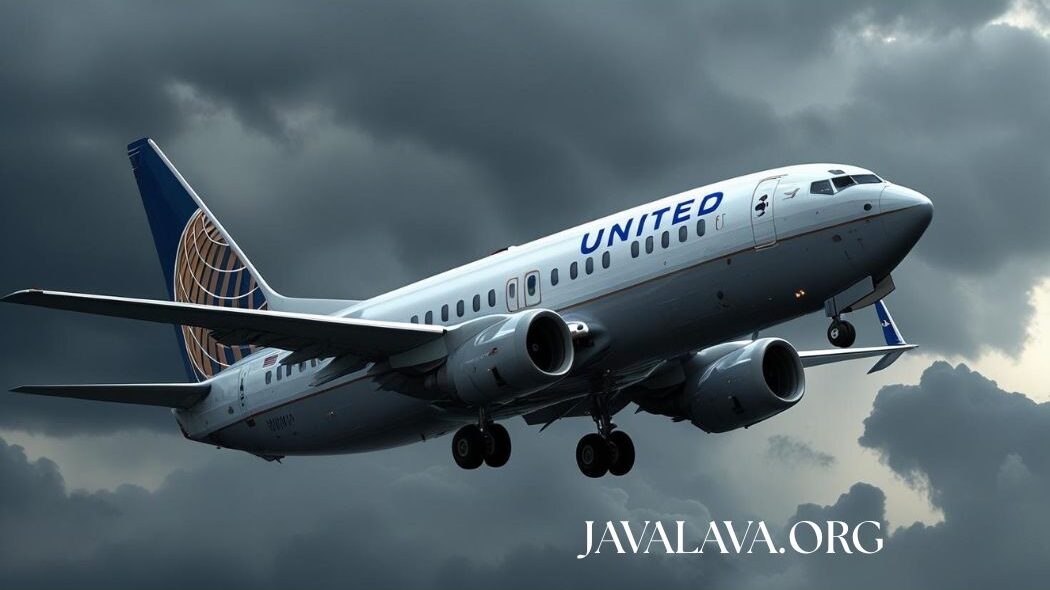United airlines Flight UA770 Emergency Diversion: Air journey is one of the most secure modes of transportation, however even in current aviation, unexpected conditions can arise mid-flight. Such turned into the case with United airways Flight UA770, a Boeing 787-9 Dreamliner operating from Barcelona (BCN) to Chicago (ORD), whilst it become pressured to declare an emergency and divert. The incident, broadly pronounced in aviation information circles, underscores the significance of sturdy safety protocols, properly-educated team, and quick decision-making in the skies.
In this article, we’ll take a deep dive into the United airlines Flight UA770 emergency diversion, explore the sequence of events, possible reasons, team reaction, passenger impact, and instructions the industry can draw from it.
Assessment of Flight UA770
United airlines Flight UA770 became scheduled as a long-haul transatlantic service between Spain and the usa. The plane worried—a Boeing 787-9 Dreamliner—is known for its gasoline performance, passenger comfort, and advanced avionics.
Flight course: Barcelona to Chicago
Date of incident: [Recent Event]
Plane kind: Boeing 787-9 Dreamliner
Emergency assertion: Squawk code 7700, signaling a wellknown emergency to air site visitors manipulate
Diversion airport: London Heathrow (LHR)
Affirming a “squawk 7700” is the aviation equal of activating risk lights and sirens—it signals controllers and nearby aircraft that instant priority handling is needed.
Series of activities
Quickly after departure from Barcelona, whilst en direction over Europe, the flight crew detected a technical issue. Reports advocate it is able to have been linked to cabin pressurization or some other critical system alert, although professional affirmation is pending.
The cockpit group
Assessed the scenario in keeping with United airlines’ emergency running techniques.
Declared an emergency to air visitors control.
Requested priority diversion to the nearest suitable airport capable of coping with a huge-frame aircraft—London Heathrow.
Why London Heathrow became chosen
Deciding on a diversion airport entails numerous elements:
- Proximity: Heathrow was close sufficient to limit time spent within the air below emergency conditions.
- Infrastructure: Heathrow is one of the fine-equipped airports in the world for coping with unscheduled landings.
- Support services: get right of entry to to United’s floor personnel, engineering crews, and passenger services ensured a smoother transition publish-landing.
Upon arrival, UA770 landed accurately on runway 27R and taxied to a designated gate for inspection.
Step-by means of-Step: How airways cope with In-Flight Diversions
For passengers and observers, an emergency diversion can seem chaotic, but in truth, it follows a clean method.
- Step 1 – problem identity
The flight group video display units plane structures continuously. If an anomaly occurs, they determine its severity the usage of checklists. - Step 2 – conversation
Pilots inform air traffic manipulate the use of the transponder emergency code (7700) and establish precedence landing arrangements. - Step 3 – Passenger protection Briefing
Cabin team tell passengers of the diversion at the same time as preserving calm and order. - Step 4 – landing and Inspection
The aircraft is landed at the selected diversion airport. Floor crews and emergency teams stand by way of. - Step 5– Passenger guide
Airlines arrange rebooking, hotel motels, and food as needed while technical teams look at.
Pro Tip: in case you ever enjoy a diversion as a passenger, observe crew commands directly and remain seated along with your seatbelt fastened.
Reactions from Passengers:
The incident highlighted effective calm management and control during a flight diversion, where passengers initially felt uncertain but were reassured by the professional crew. The captain communicated the situation clearly, and the absence of oxygen masks indicated that the situation was under control. Passengers noted a sense of togetherness, attributing the positive experience to the team’s professionalism. Upon landing, United Airlines staff met them, assisted with rebooking, and provided hotel and meal vouchers.
The emergency response showcased the integration of modern aviation technology and global coordination. The Boeing 787-9 Dreamliner transmitted critical data to European air traffic control and United’s operations center, allowing for quick navigation across Spain, France, and the UK. The advanced Instrument Landing System (ILS) at Heathrow facilitated a smooth landing. Crew training played a crucial role, as pilots and cabin crew underwent extensive simulations to ensure safety during in-flight emergencies.
Reasons: What caused the Diversion?
Even as authentic reports are pending, not unusual causes of diversions encompass cabin pressure issues, engine irregularities, medical emergencies, or electrical faults. UA770’s team noted pressurization fluctuations, leading to oxygen mask deployment. Controlled descents are widespread in such instances, ensuring passenger safety. The aircraft, a Boeing 737-800, underwent put up-touchdown inspections to determine the foundation cause.
YOU MAY LIKE: Delta Flight DL275 Diverted Lax: After Mid-Air Emergency
Conclusion
The incident regarding United airlines Flight UA770 serves as a textbook instance of aviation safety in action. From the team’s immediately popularity of a hassle to the smooth diversion and safe landing, the method displays the robustness of modern-day airline protection protocols.
Diversions may cause inconvenience, but their long-term priority is to get everyone adequately on the ground.
FAQs
1. What brought about the UA770 diversion?
2. Become all people injured at some point of the diversion?
No injuries were reported. The crew treated the incident professionally, making sure passenger safety.
3. What does “squawk 7700” imply?
It’s the transponder code used to signal a standard emergency to air traffic control.
4. Why didn’t the flight hold to Chicago?
Persevering with might have posed needless threat. Heathrow changed into the nearest appropriate airport.
5. How does United airways assist passengers after such incidents?
They generally provide rebooking, lodge remains if needed, food, and updates until passengers can hold their adventure.
FOR FURTHER INFORMATION VISIT: JAVALAVA.ORG

